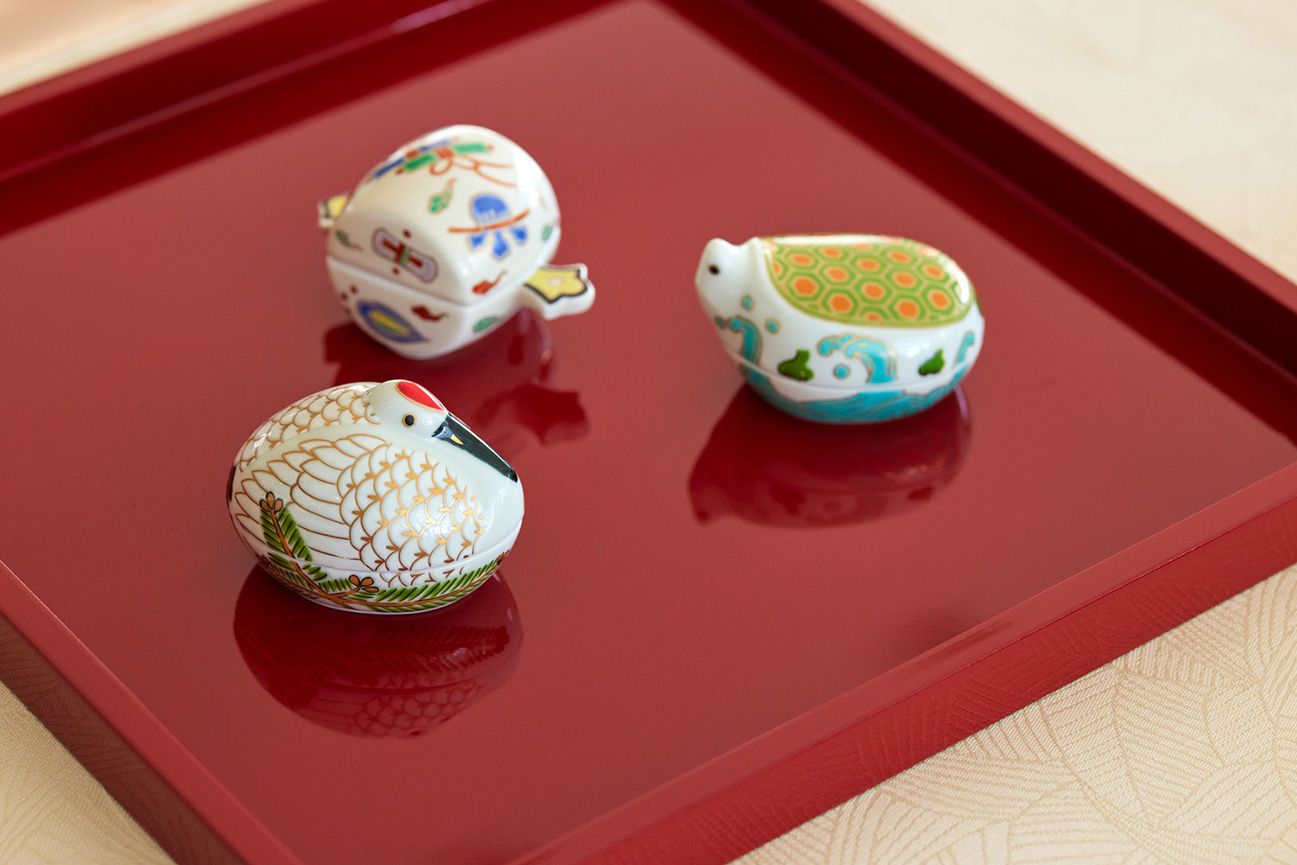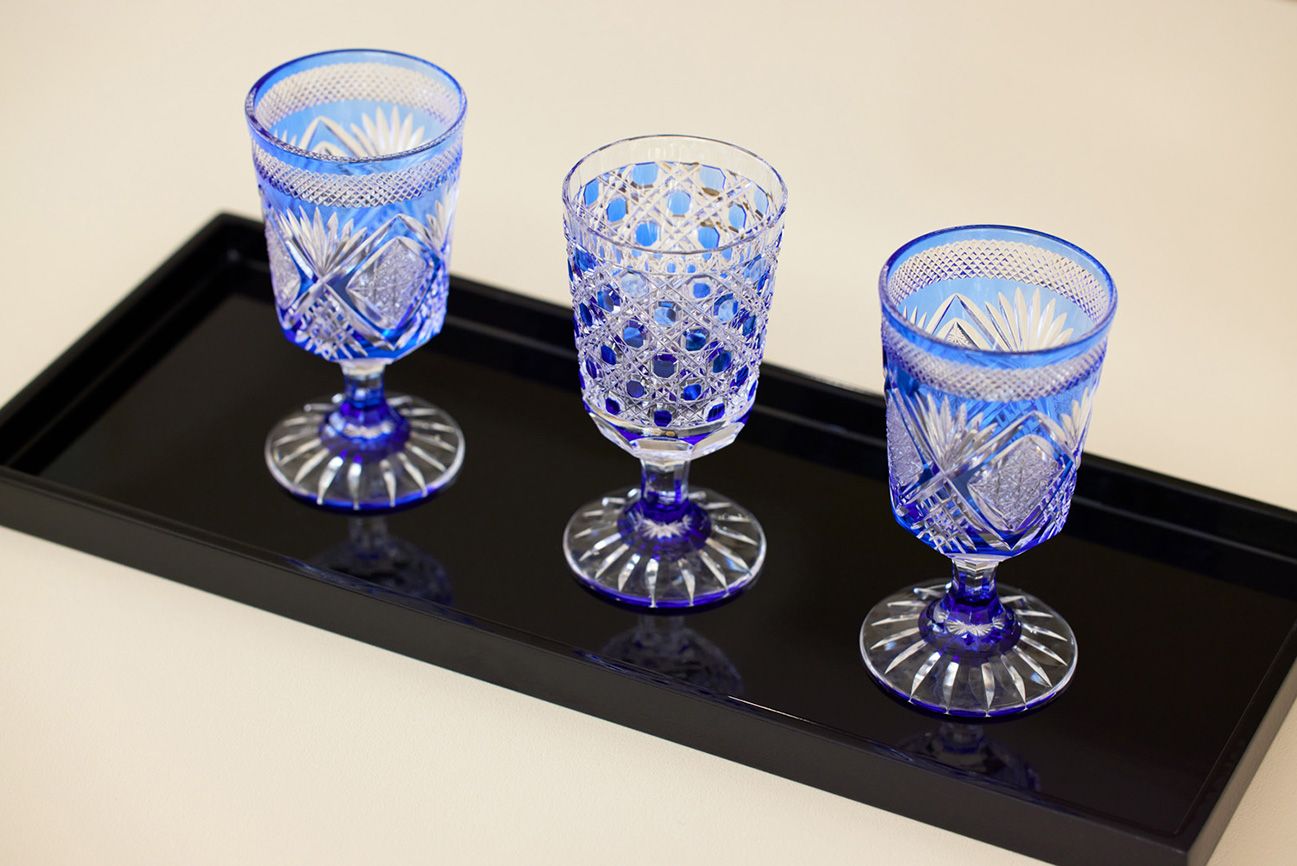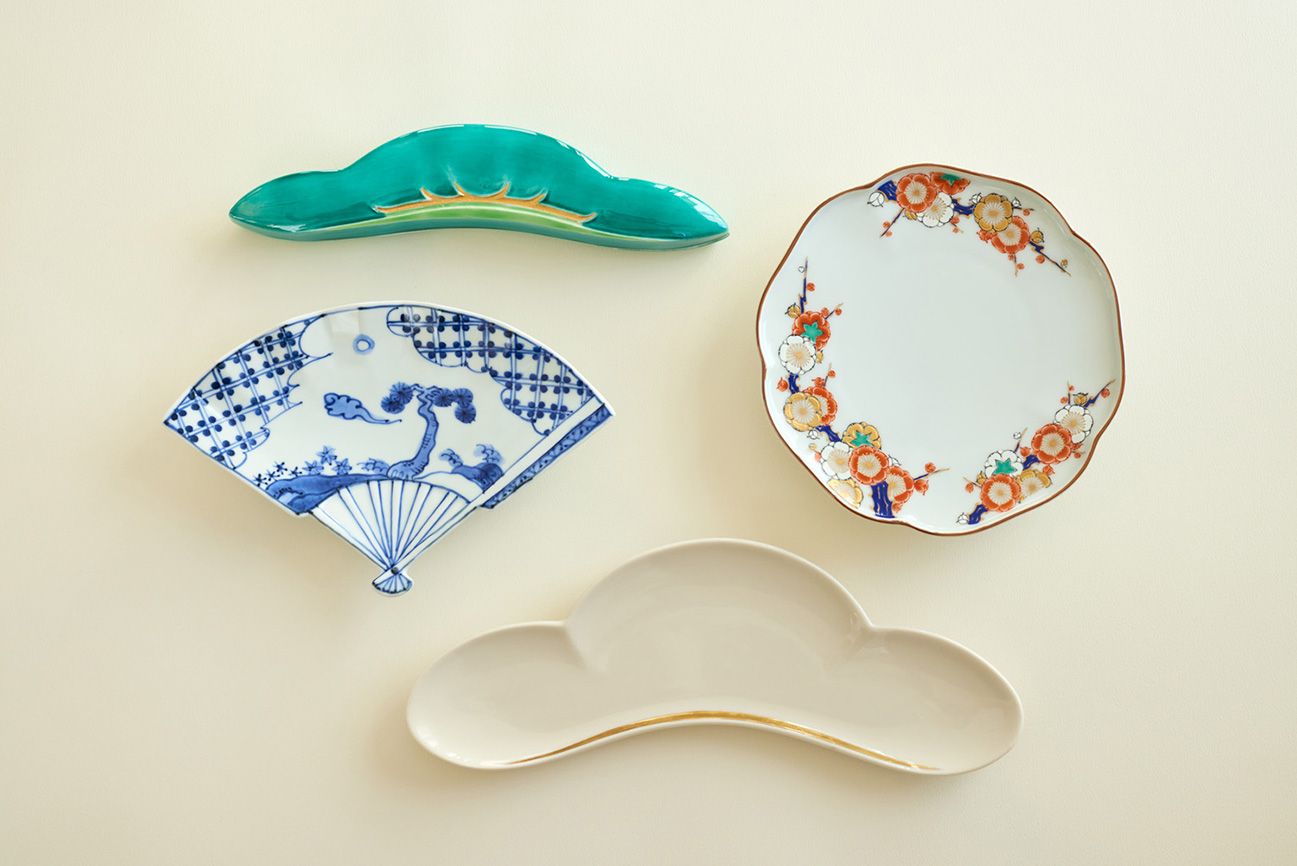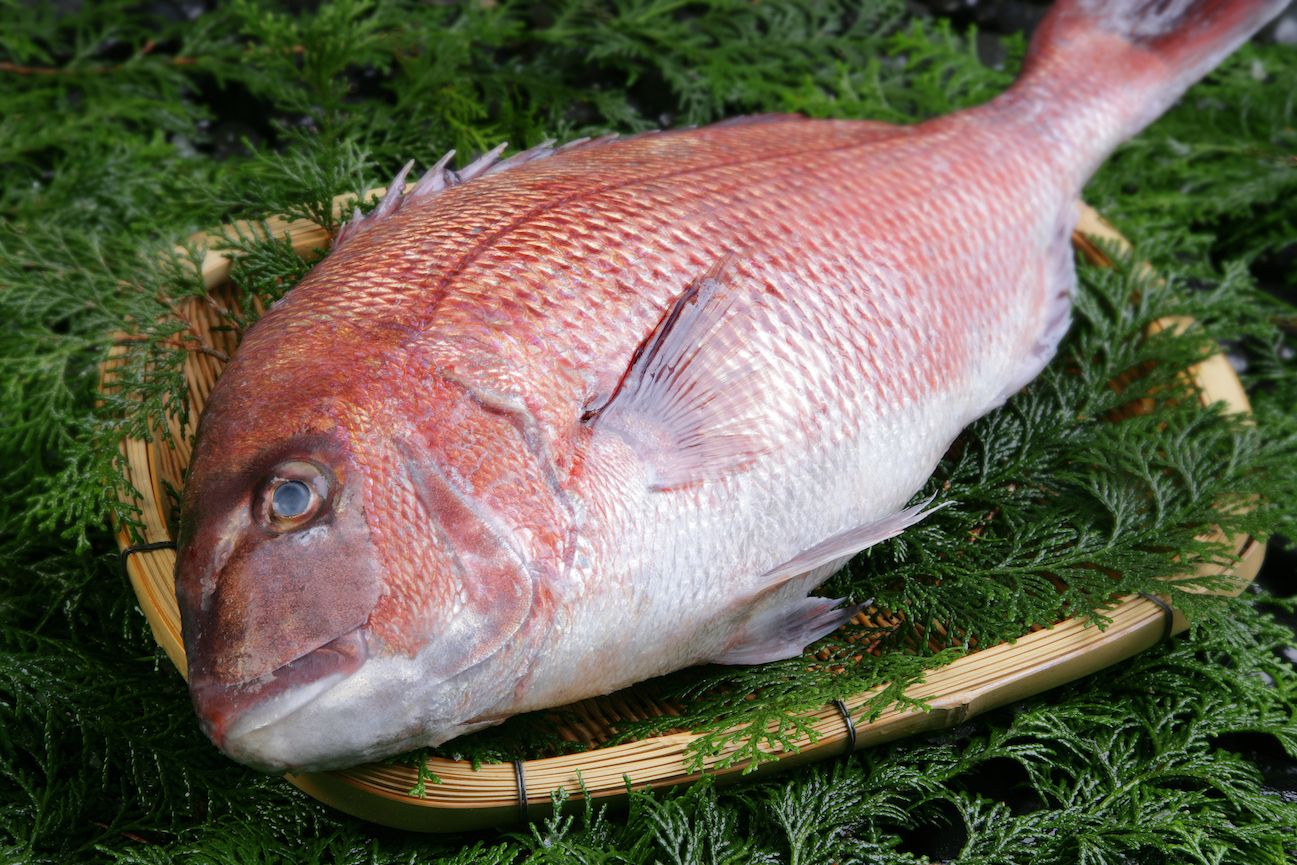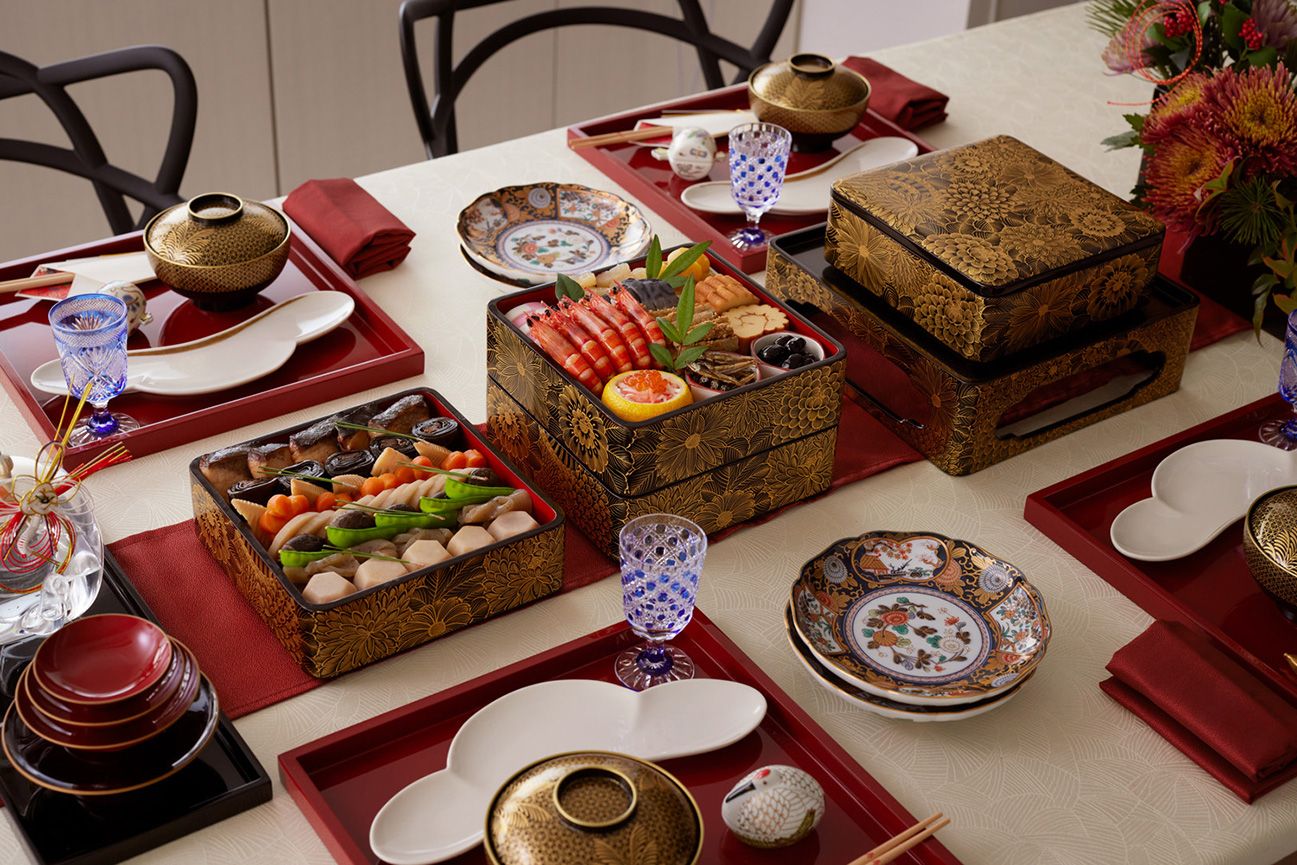
Celebrate special occasions with spectacular dishes and tableware
In Japan, New Year is the most important event of the year—comparable in importance to Christmas in the West. During the first three days of the year (January 1–3), special tableware and dishes are prepared to wish the family a year of health and happiness. This article introduces the Japanese dining table and the feelings incorporated into the food served on such special occasions, taking New Year osechi cuisine as an example.
In Japan, it is customary for families and relatives to gather around the New Year to enjoy osechi cuisine. The word osechi is derived from the words sekku and sechie, which signify the turning point of the seasons. In addition to New Year celebrations, Japan celebrates the gosekku (five festivals) events where people make offerings to the gods to pray for a good harvest (abundant grain), good health (without illness), and prosperous descendants, and to drive away evil spirits.
Toshigami (guardian deities of the New Year) are said to visit each household on New Year's Day. People wish for a good harvest and peace in the coming year, and pay respect to their ancestors. Especially on the first three days of the New Year, it is said that the kitchen should not be disturbed in order to welcome the toshigami, and it is customary to avoid the use of fire at this time. During this time, housewives, usually so busy cooking, can take a rest. As meals are packed in stacked boxes to be eaten during this three-day period, the food is usually thoroughly cooked and strongly seasoned.
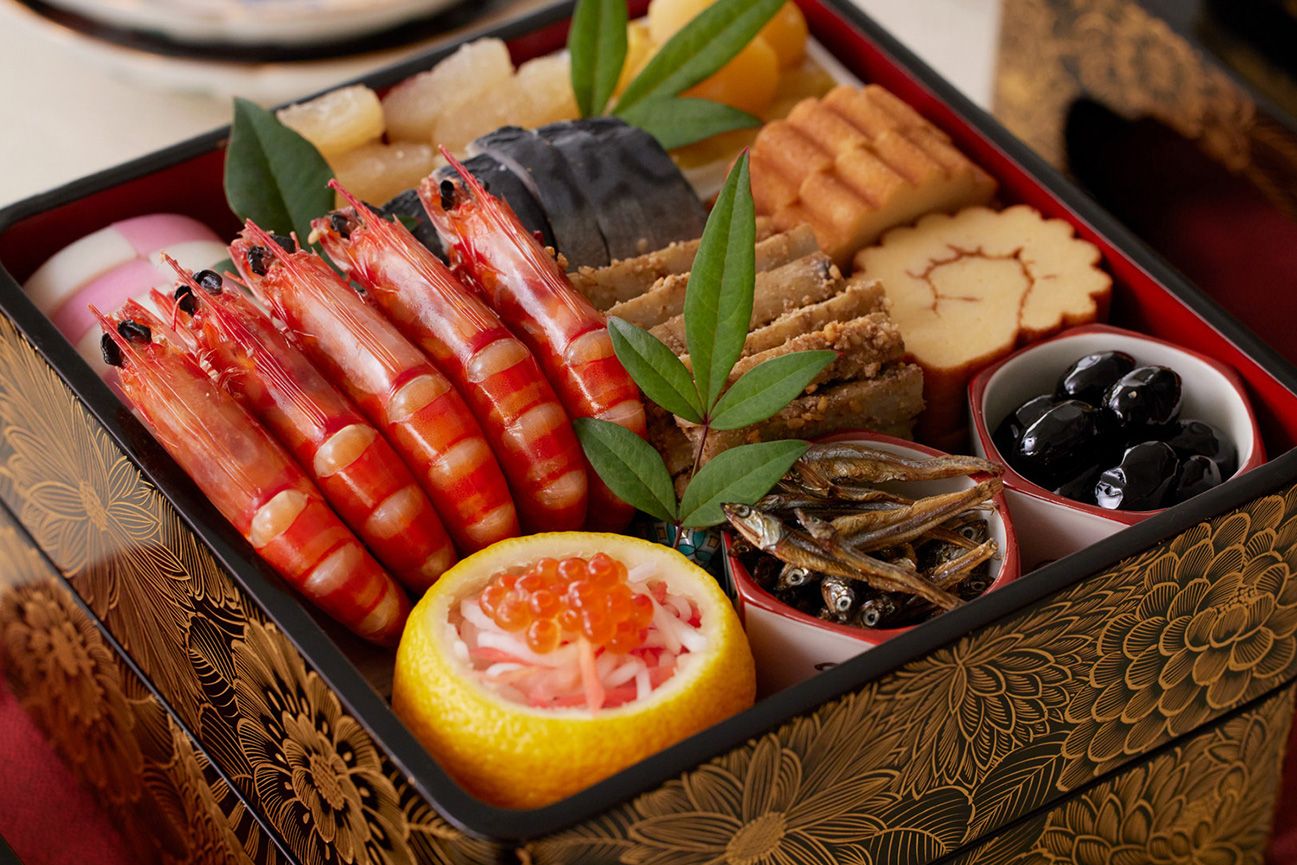
The first tier contains the three osechi staples known as sanshuzakana, including kuromame black beans (bottom right), tazukuri glazed roasted anchovies (center), and kazunoko herring roe (center back). The idea is to arrange the food neatly, keeping color in mind.

The fourth tier contains an attractive arrangement of cooked root vegetables.
The basic type of stacked boxes is a four-tiered box, but among today's nuclear families, two-tiered boxes are more popular. The first tier is filled mainly with various snacks to accompany drinks, known as either sanshuzakana or kuchitorizakana. Sanshuzakana dishes include kuromame sweet black soybeans (or tataki gobo pounded burdock root in the Kansai region), tazukuri glazed roasted anchovies, and kazunoko herring roe. Kuchitorizakana dishes include sweeter ingredients from the mountains and sea, such as kamaboko fish cake or kinton mashed sweet potatoes, as well as salty delicacies such as dried squid or sea cucumbers. The second course consists mainly of vinegar-marinated dishes. In addition to daikon and carrot slices marinated in sweetened vinegar, fish preserved in vinegar is also often seen, although the type of fish tends to vary by region. The next tier, the third, contains the main dish of grilled fish. Aside from fish, chicken or duck are also seen, usually marinated in soy sauce or miso, then grilled. The fourth and bottom tier usually consists of simmered vegetables. This home-cooking standard consists mainly of root vegetables such as potatoes, burdock root, and carrots, all cut into small pieces and cooked in dashi (Japanese soup stock). The traditional way of cooking vegetables is to cook them in a single pot, but if boiled separately and then simmered with different seasonings, flavors can be easily and quickly absorbed.
Osechi cuisine wishes for a bountiful harvest and prosperous descendants, and each dish has its own meaning. For example, kazunoko (herring roe)1 signifies having prosperous descendants and kuromame (black soybeans)2 signify good health and diligent work, while tazukuri (glazed roasted anchovies)3 refers to the practice of spreading dried anchovies to fertilize rice fields, leading to a bountiful harvest. Kombu (seaweed) is a play on the word for "joyful," while tataki gobo (pounded burdock root)4 is said to bring good luck, or else strength from its firm roots in the ground. The shape of datemaki (rolled fish omelet)5 represents scrolls, which improve one’s studies, while golden kinton (mashed sweet potato)6 represents fortune and prosperity. Pine, bamboo, and plum, which symbolize joyous occasions, cranes and turtles, which symbolize longevity, and red, white, and golden colors are also used in dishes to express a sense of celebration. Carrots carved into the shape of plums, yuzu peel cut to resemble pine needles, alternating arrangements of red and white fish cakes, and black soybeans decorated with gold leaf create a gorgeous, festive presentation.
1 Kazunoko: Herring roe preserved in salt
2 Kuromame: Black soybeans boiled in sweetened soy sauce
3 Tazukuri: Dried young Japanese anchovies, roasted and mixed with sake, sugar, soy sauce and sweet mirin
4 Tataki gobo: Firm boiled burdock root seasoned with sesame and pounded to soak up the flavor
5 Datemaki: Fish paste mixed with egg and sugar, baked, and shaped into rolls
6 Kinton: Mashed sweet potato and chestnuts that both are colored golden brown with gardenia, boiled into a sweet paste, then mixed with honey-simmered chestnuts
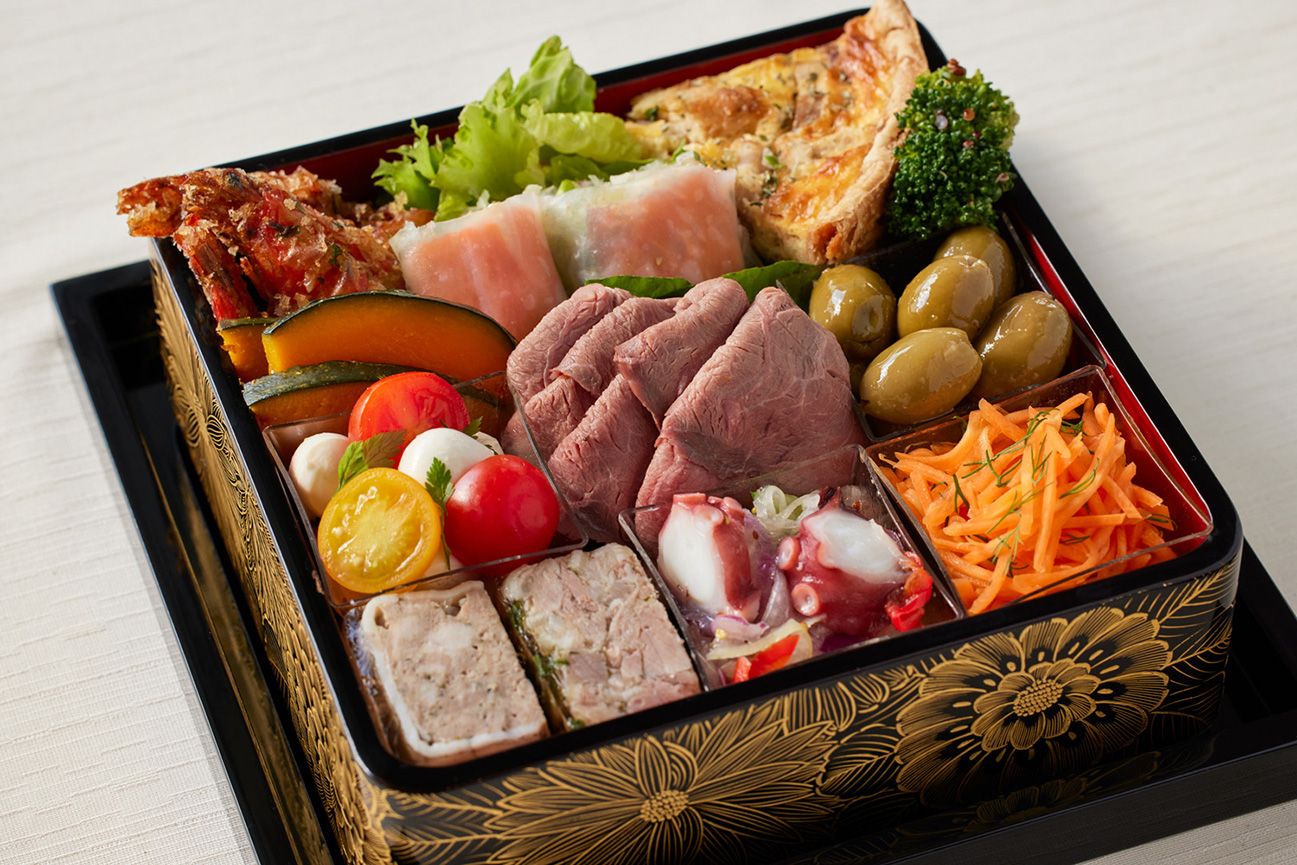
When arranging food in a Western style, focus on dishes containing less liquid that will keep for longer, while maintaining a good balance of colors.
Stacked boxes are clever containers able to hold a large number of dishes in a compact space. The basic idea is to fill a square container with food without any gaps between the dishes. The dishes are first laid out side-by-side in rows, and then arranged in checkerboards or diagonally, depending on their shape. A more advanced method is called ranmori, in which the dishes are arranged at random. In both cases, the main dish should be placed prominently for spectacular effect. In recent times, Western-style arrangements of osechi dishes including roast beef, meat pate, olives, and salmon have also proven popular. Beautiful arrangements of appetizers, main dishes, and desserts in separate tiers are ideal not only for the New Year's period but also for entertaining guests at home parties.
When the family gathers together, they first greet the New Year with a glass of toso (New Year’s ceremonial sake), and then proceed to eat, starting with the top tier. The food is served with chopsticks freshly made of green bamboo, while each person uses a pair of doubled-ended tapered chopsticks of willow. This is based on the concept of shinjin kushoku, which means celebrating the New Year together with the gods. The chopsticks are tapered at both ends because one end is for the gods and the other end is for humans to use. Toso sake, enjoyed before meals, is a kind of medicinal wine imported from China, believed to drive away evil spirits and revive the body and soul. Toso can be made at home by soaking commercially available spices (a mixture of herbal remedies) in Japanese sweet sake for 5 to 8 hours, and then extracting it.

Gold-inlayed bowl for zoni soup. For those without toso cups, a glass sake flask with a decorative cord can be used to create a celebratory New Year-like effect.
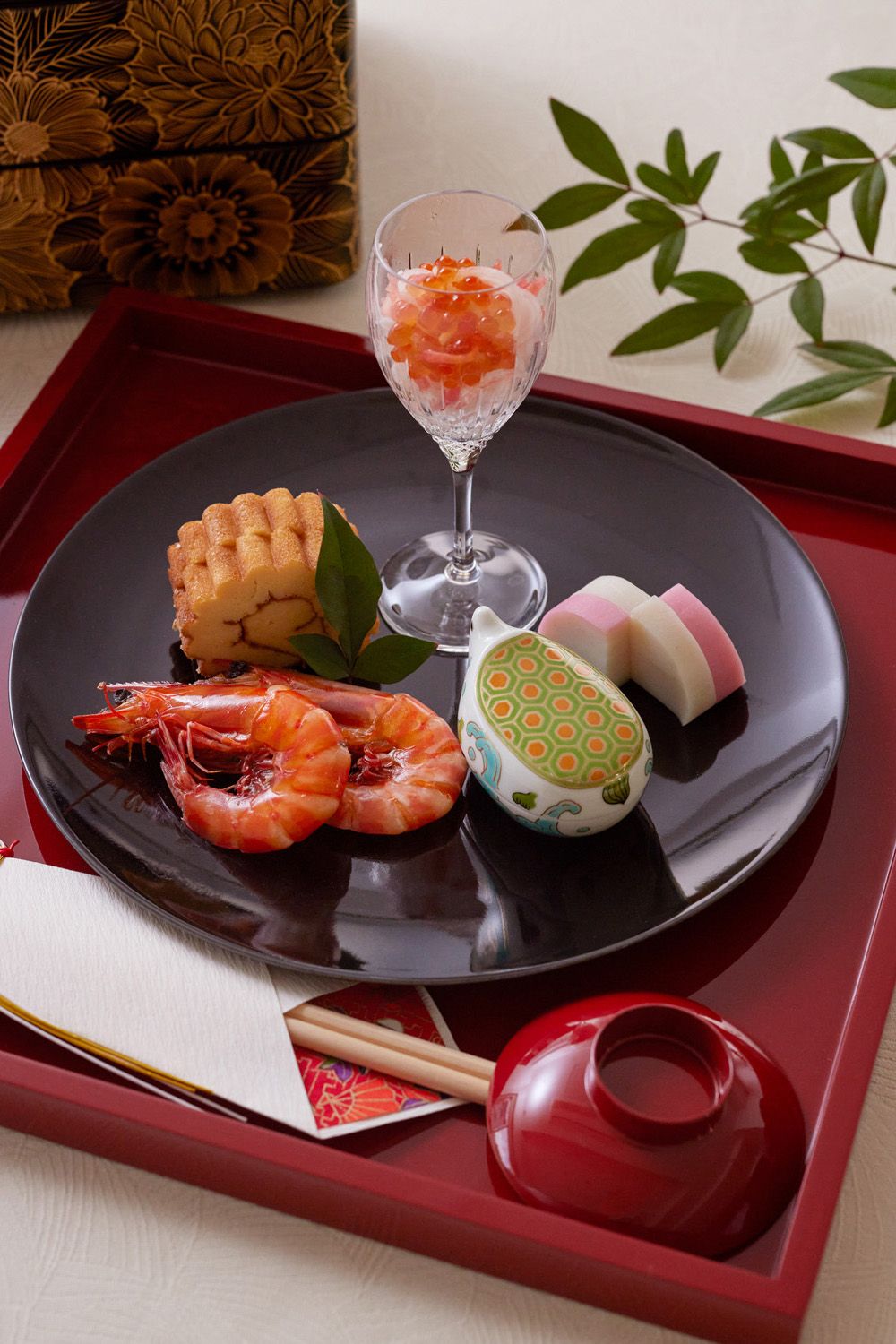
By arranging little dishes on flat platters and serving namasu and other delicacies in lidded dishes or glasses, you can create a modern impression. Use your own tableware to create different arrangements.
Along with osechi dishes, zoni soup is an essential New Year's dish. The development of modern distribution systems has diluted the characteristics of regional dishes, but zoni still retains a strong regional flavor. Originally, zoni was a soup made by boiling various ingredients, but by the Edo period, it had come to include mochi rice cakes, which were offerings to the gods, during the New Year. Since the rice is steamed, pounded with a pestle, and rounded by hand, round mochi is still eaten in many regions today, but flattened mochi cut into squares is also very common. Broadly speaking, round mochi is more common in the Kansai region while square mochi is more common in the Kanto region. The soup stock, which also varies from region to region, includes kombu seaweed, dried bonito flakes, dried sardines, and dried squid. The seasoning is often based on miso or soy sauce. Mochi is baked and then boiled, or else steamed and then boiled, depending on the origin of each family.

Kanto style is made with baked mochi, soup stock, and soy sauce.

Kyoto-style zoni soup is made with round mochi and white miso paste.
As New Year's Day is the most festive event of the year, using tableware that reflects the traditions of Japan is most appropriate. In the days when large families lived together, each family owned large lacquered stacked boxes, and wealthy families would order magnificent boxes decorated with their family crest or decorative inlays, which would be passed down from generation to generation. Today, as family life has diversified, a New Year's table can be set without the need to prepare such lacquered boxes, by simply setting out a set of festive chopsticks with chopstick rests for each person, a set of lacquered bowls and plates with festive patterns, and platters holding a variety of dishes. Just as with the food, the key to coordinating the table is creating a festive atmosphere by using red, white, and gold colors with pine, bamboo, and plum motifs. A white cloth accented with a red table runner, decorative mizuhiki cords displaying auspicious plants and animals, and sake served in faceted glasses will create a festive atmosphere.
During the New Year's holiday, not only immediate family members but also relatives and friends who live more distantly gather together. It is an occasion for communication, where everyone can enjoy discussing the meaning of the ingredients in the osechi dishes and appreciating the beautiful tableware. The Japanese New Year's table is filled with great ideas for cooking and table coordination for special occasions. Why not put some into practice when welcoming family and friends at your own table?
To read more about Japanese home cooking and everyday tableware, click here.
(Profiles)
Yu Okada (supervisor)
Japanese cuisine teacher at Tsuji Culinary Institute. Born in Niigata Prefecture in 1968. After graduating from Tsuji Culinary Institute, he worked at a Japanese restaurant in Tokyo. Returned to the school in 1994 to teach. In addition to teaching, he has appeared in and collaborated with numerous media outlets, including the TV dramas "Kokosei Restaurant" and "Mio’s Cookbook". He is also involved in book publishing, including "How to Use a Kitchen Knife" (Natsumesha).
https://www.tsuji.ac.jp/
Yuko Hama (Dish selection / Supervision)
Food Space Designer. Involved in floral decorations, interior design, and table coordination. Offers consultations on tableware for traditional Japanese inns and restaurants, as well as planning and staging for parties and other events. In recent years, she has been researching the Saijiki, an almanac of seasonal words used in haiku, as well as Japanese life and culture, working to offer a lifestyle that is based on the fusion of Japanese and Western styles and highly spiritual design. TALK TCS Vice President and certified instructor. Author of numerous books.
https://hanakukan.jp
Instagram: @yukohama.hanakukan
Hanae Kaede (Cuisine)
Gained experience working in the kitchen at Michelin-starred restaurants in France before returning to Japan to study Japanese cuisine in earnest through a specialized course at the Tsuji Culinary Institute of Advanced Studies. Later, after working as a teacher at a cooking school and in product development, she opened her own cooking studio, Atelier Kafuné, in Tokyo’s Monzen-nakacho district. Also holds workshops teaching Japanese cooking to visitors and residents from abroad. Published a book of Japanese recipes in France. An English version was also later published.
https://www.kafune-tokyo.com
Instagram: @atelier_kafune
Reference: Washoku Japan
Text: Junko Kubodera; Photography: Aya Kawachi

